Vaginal Birth |
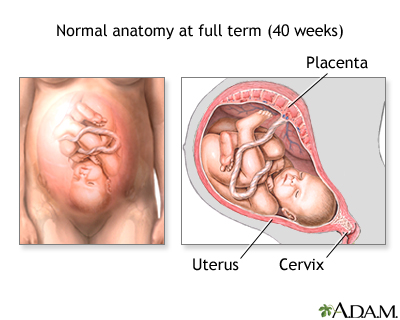 This presentation illustrates key stages of a normal vaginal delivery. Please keep in mind that every birth is unique, and your labor and delivery may be different. |
Vaginal Birth |
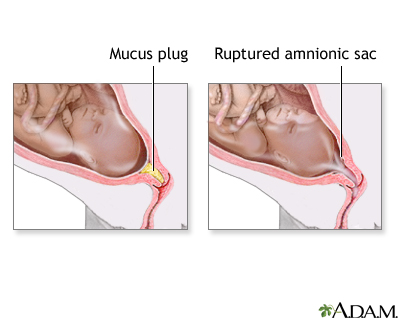 Your body makes some amazing changes in the days and hours leading up to your baby's birth. A day or two before labor begins, the mucus plug that sealed off your uterus detaches from the cervix and passes through your vagina. This discharge is sometimes called "bloody show" because it's tinged with blood. Before labor begins or in the early stages of labor, your amniotic sac may rupture and you may feel fluid trickle or gush out of your vagina. If your "bag of waters" doesn't break on its own, your doctor may rupture it manually. |
Pain Relief |
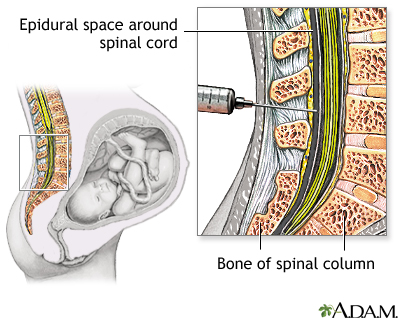 Explore your pain-relief options before you go into labor. Some women aim for a drug-free delivery and rely on various breathing techniques, massage, visualization, hypnosis, and other strategies to ease the pain of labor. Others prefer pain medication or regional anesthesia (such as an epidural, which numbs the lower half of your body). |
Vaginal Birth |
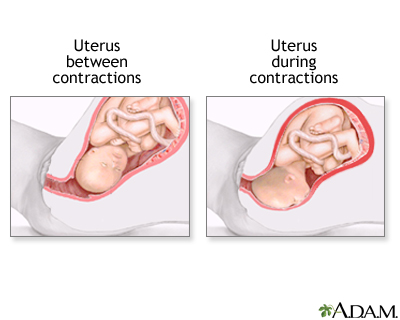 Contractions happen when your uterine muscles involuntarily tighten and relax. When true labor begins, you feel contractions at regular intervals. As labor progresses, these contractions get longer, stronger, and closer together. During active labor, you may feel intense pain or pressure in your back or abdomen during each contraction. You may also feel the urge to push or bear down, though your doctor will ask you to wait until your cervix is completely dilated. |
Vaginal Birth |
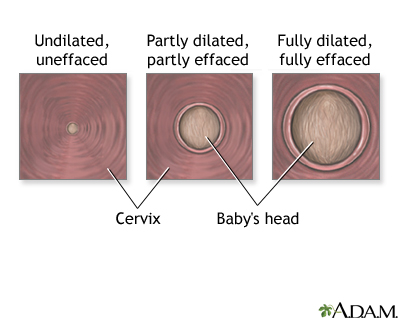 Contractions help your cervix dilate -- or open -- so your baby can pass through the birth canal. You're fully dilated when your cervical opening measures 10 centimeters. As the cervix opens, it also thins (effaces) in preparation for delivery. |
Vaginal Birth |
 When your cervix is fully dilated, your doctor gives you the OK to push. Propelled by your effort and the force of your contractions, the baby makes his way through the birth canal. The fontanels -- soft spots -- on his head allow it to mold to the shape of this narrow passage. Your baby's head "crowns" when the widest part of it is at the vaginal opening. |
Vaginal Birth |
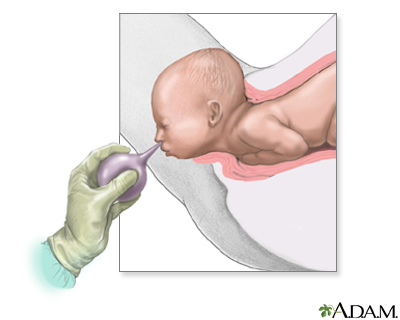 As soon as your baby's head emerges, the doctor suctions amniotic fluid, blood, and mucus from his nose and mouth. More contractions and pushing help deliver the baby's shoulders and body. |
Vaginal Birth |
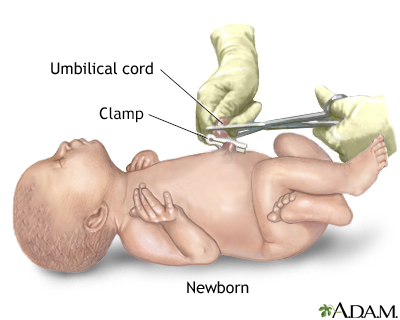 Unless your partner has requested the honor, the doctor clamps and cuts the umbilical cord and examines your newborn. |
Vaginal Birth |
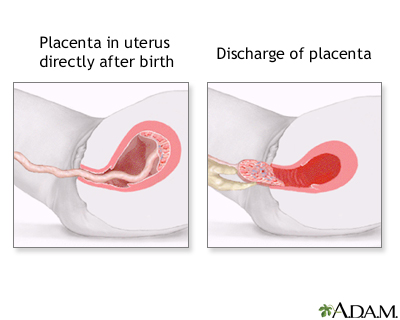 It's not over yet: After your baby is born, more contractions help you deliver the placenta, or "afterbirth." |